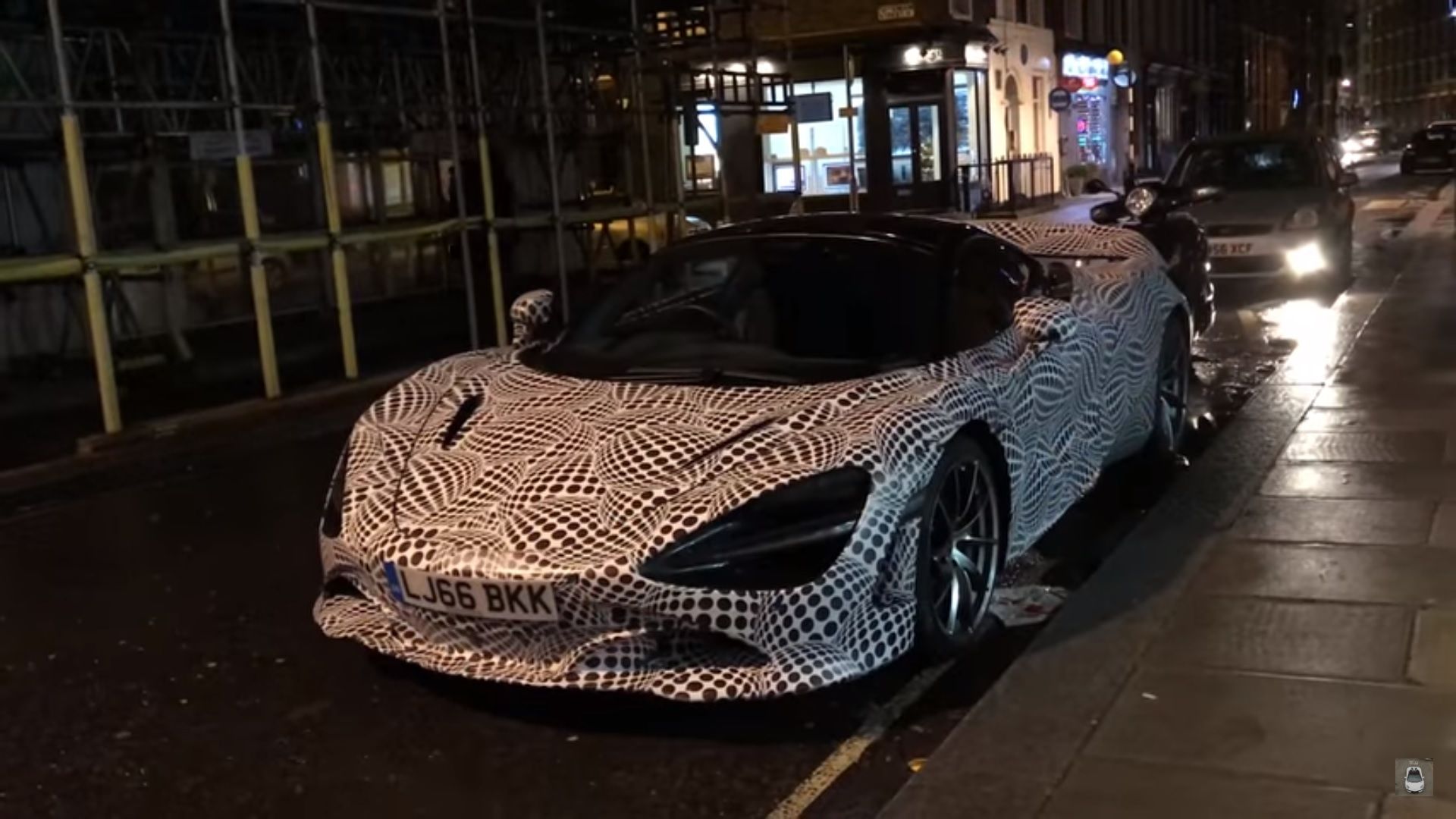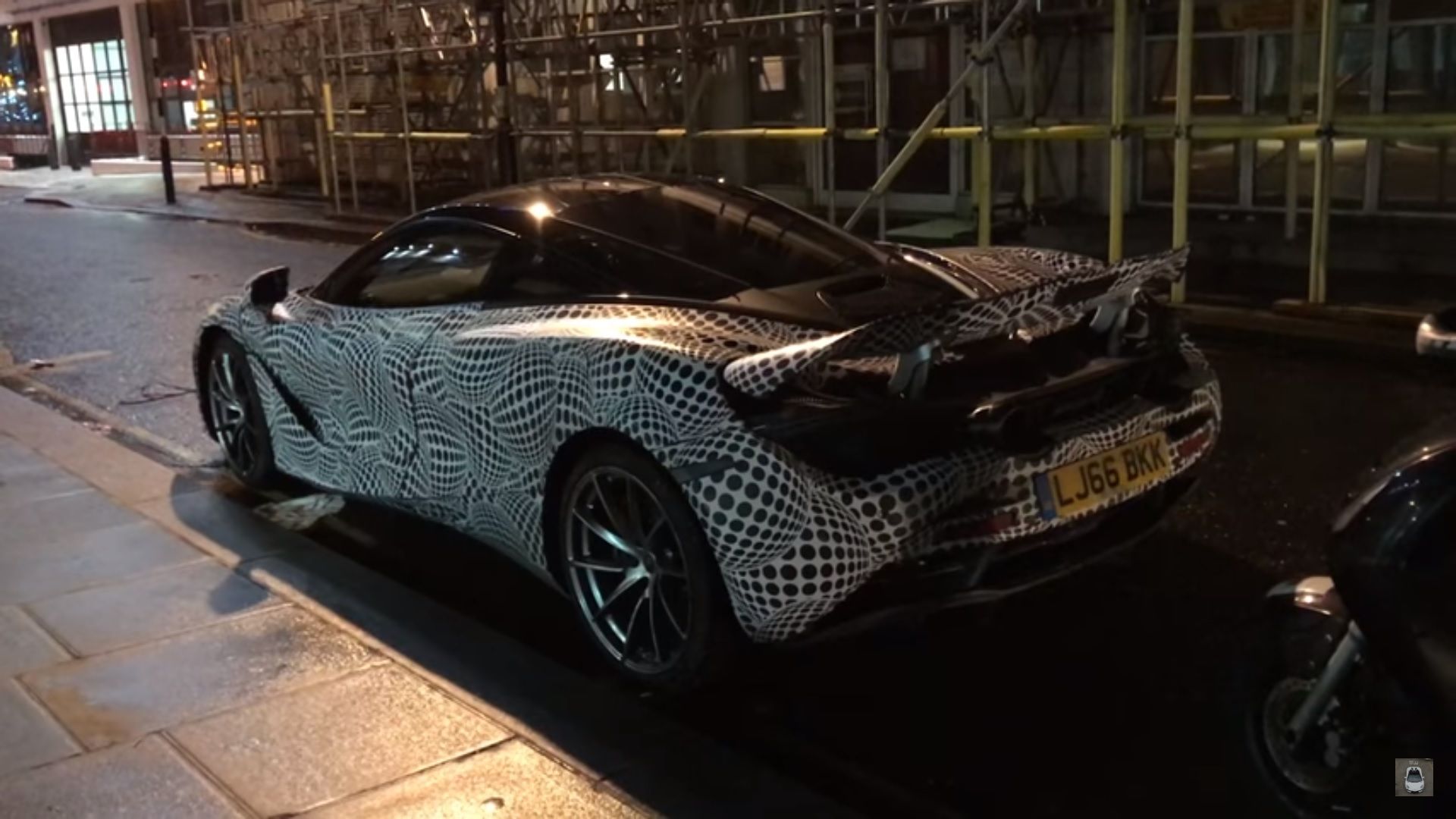McLaren isn’t sitting pretty after unveiling the Senna hypercar last month, especially not when there’s another hypercar that’s waiting to be developed. We already know a few details about the car, including its codename, “B23,” and the fact that it will belong in the British automaker’s Ultimate Series lineup, joining the P1 and the Senna in that rarefied category. The BP23 is scheduled to debut sometime this year, but we're getting an early look at it thanks to a video someone took when stumbling upon what could be it in the wild. In fairness, some suggest it could be a 720S testing winter tires or a 720S on a BP23 chassis. Oh, the excitement... check out the video below.
There have been a lot of speculation surrounding the status of the B23, including its status as the spiritual successor of the iconic McLaren F1. I know that we’ve thrown that label around to describe cars like the P1 and, most recently, the Senna, but if rumors about the B23 end up being true, then we can forget about the other members of Mclaren’s Ultimate Series having any spiritual connection to the P1. The B23 will be that car.
From what we know, the B23 will carry a lot of features that are similar to the F1, one of which is arguably the latter’s most identifiable feature: the three-seat layout with the central driving position. We thought that the P1 would have that kind of setup. It didn’t. We thought the same thing about the Senna. It didn’t either. Cross those two out, and you’re left with the B23, which is reported to carry the same three-seat configuration as the car it’s succeeding.
Granted, McLaren has yet to confirm (or deny) the unique seating arrangement, but it is possible for the B23 to get it if it's going to take styling cues from the F1. A recent spy video of a McLaren prototype dressed in heavy camouflage seems to point to the model being an early version of the B23. It could even be the same prototype that TopGear tested back in September 2017. On the surface, the model was actually a McLaren 720S, at least until you got inside where a three-seat configuration was installed, including a central driving position for the driver. There’d be no reason for McLaren to employ that kind of interior setup on a 720S, except to use the car as a testbed for a more extreme model that’s yet to arrive.
In addition to its unique interior, the McLaren B23 will also likely come with an evolved version of the automaker’s MonoCage carbon fiber chassis. Its place in the Ultimate Series lineup is also an indication that McLaren is serious about making the car “the fastest ever McLaren.” There have been no details on the kind of powertrain it’ll carry and the subsequent output it can produce, but we expect it to take a page out of the P1’s book and carry a hybrid powertrain that includes a 4.0-liter twin-turbo V-8 engine and an electric motor. A total output of around 1,000 horsepower should be expected given the car’s status as the rightful successor to the most iconic McLaren of all time.
On the tech front, the B23 will likely receive McLaren’s latest tech developments. That could include the latest version of the automaker’s electrohydraulic suspension, as well F1-derived systems like the Instant Power Assist System (IPAS) and the Drag Reduction System (DRS). The P1 had these two tech features so there’s no reason McLaren would leave them out of the B23.
Only 106 examples of the B23 will be built. McLaren already announced that number because it accompanied it by saying that all 106 units are already accounted for. It should also get a different product name, though what that could be is still subject to a lot of discussions. In any case, expect the McLaren B23, or whatever name it’s going to get, to be a worthy successor to the F1.
References
Read our full speculative review on the 2019 McLaren BP23.
McLaren P1
Read our full review on the 2014 McLaren P1
McLaren F1
Read our full review on the 1993 McLaren F1
McLaren 720S
Read our full review on the 2017 McLaren 720S.



